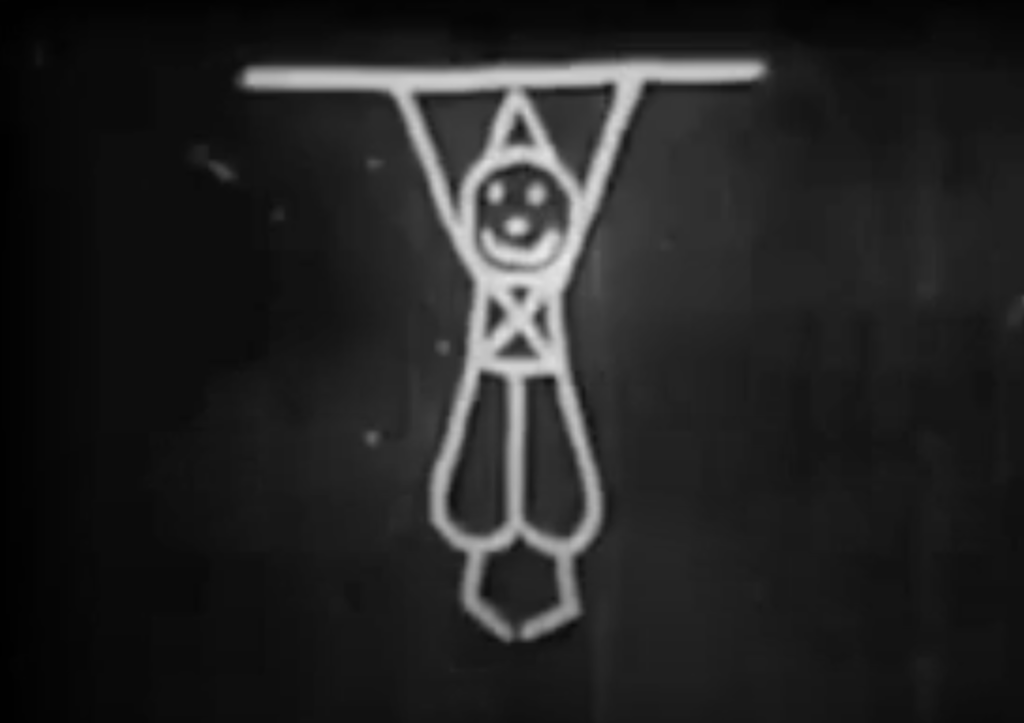
As I wrote above, a series of completely random and unpreordained circumstances brought me to the threshold of the “revelation” that would later influence all my subsequent life choices.
My sensitivity to “expressive movement” was probably in some way innate, otherwise it would not have emerged so forcefully in the face of a simple fortuitous encounter with an otherwise little-known experimental psychological theory, so much so as to divert the course of my interests, and of my own primary activity.
However, this “accident” helps me to focus on what I believe is the primary core of every animator’s talent, whether innate or learned.
It is an “instinct”, a sensitivity, let’s call it what we want, completely independent of the technique actually used to express this talent, from animated drawing, to claymation, to stop-motion, to 2D and 3D computer animation, since the beginning of the history of cinema itself. Indeed, even before, to its prehistory, given that it is well known how the drawn film even anticipated the subsequent invention of “animated photography” from the Lumiere Brothers onwards.
Anyway, this this also applies to the most bizarre animation techniques, sometimes seen only in experimental or niche films, at specialized festivals (I mention only the magnificent découpages of Luzzati & Gianini, the magical animated silhouettes of Lotte Reininger, the extraordinary fantasies on film by Norman McLaren, the phantasmagorical pinscreen of Alexander Alexeieff) but also to original and somewhat anomalous “experiments”, yet successful with critics and the public, such as some brilliant films by Tim Burton and Gulliermo del Toro.
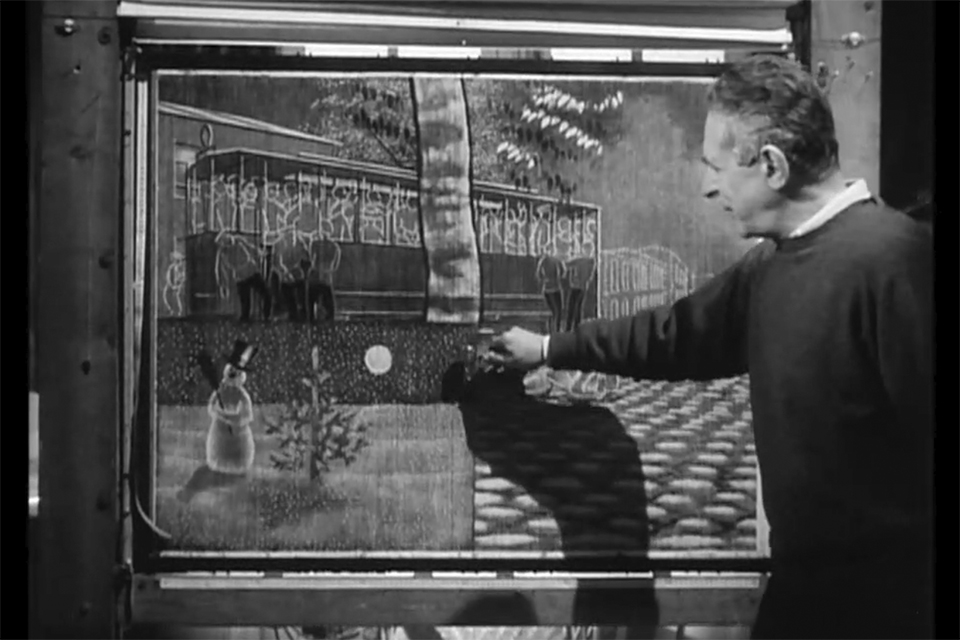
Well, going back to my story, I still remember very clearly, as if it had happened yesterday, the very vivid sensation I had when I received the developed film of my very first “animated drawing” and projected it on the wall of my room.
It was a crude little man in a hat who awkwardly took a few steps forward in a kind of a double-bounce; suddenly BANG! received a heavy anvil on his head, staggered and fell to the ground in a faint, FLOP! The anvil, after bouncing in the air, finally fell back on him CRASH! Haha, what a hilarious joke! I even reinvented a kind of personal “Arroseur Arrosé”!
However, it was nothing more than the “practical” application of that concept of “causality” which I had dealt with by moving small white disks during my university studies. It was an absolutely rudimentary first test, of course, I had no knowledge of the animation technique at the time, not even an approximate one. I only knew that it could be achieved by drawing a series of images in sequence on sheets of paper placed in register under a movie camera, then photographing them frame by frames.
Yet the impression I had of it was such that it probably influenced in a decisive way and forever my choice to devote myself to this very particular art, then as a profession: this barely sketched drawing of a little man with a hat, still so clumsily and rudimentary (paradoxically, since I lacked specific preparation in fine arts, I always considered myself a bad draftsman, always forced to laboriously pursue my ambitions as a traditional animator), at the very moment he began to move and to take his tentative steps on the screen, wobbling at 24 frames per second, it was no longer a “drawing”, but HE was indeed “the little man in the hat”. A moving – living – little character. A figure that virtually separated from the sign traced by my hand, and “came to life”, showed its intention, its vital force, an expression in his “face”. His eyes “looked at me”, manifesting, albeit in a crude way, a conscience and an intention, and when the anvil hit him, this was no longer just the “drawing of an anvil”, but a solid iron object, and its “weight” was distinctly perceivable, thanks to the effect it manifested by hitting the other subject.
Art and Time Machine
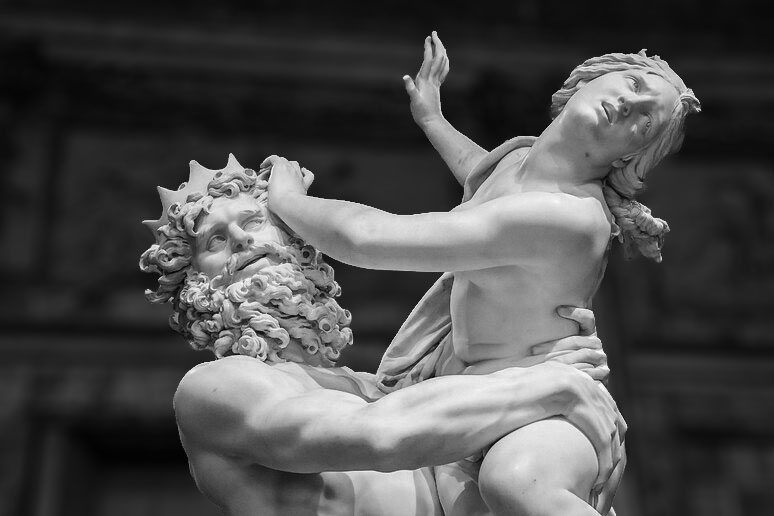
Synchronic Arts
Time is frozen. We can observe and evaluate the work of art as a whole or in detail for a single moment or for an indefinite time.
The work of art remains unchanged over time, except for external events that are not significant for the work itself (damage, manipulation, restoration, theft, etc.).
Space is directly expressed and occupied by the work of art. We can observe it in the material, in the weight, in the perspective, in the balance, in the internal and external spatial relationships of the work itself.
Movement can be suggested or denied by the work of art, it can only be observed as a potential event, in development, or in instant suspension, in the dimensional relationship and balance of weights between the parts of the work.
Narration, dynamism, rhythm are expressed through comparison and juxtaposition / contrast between the parts of the work.
It can “tell a story” only as a metaphor.
Sculpture, painting, architecture, graphics, photography etc.
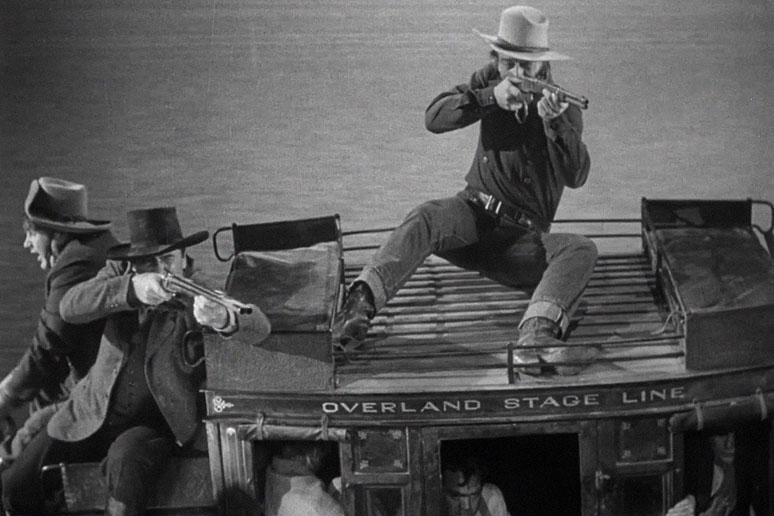
Diachronic Arts
Time is unfolding. We can observe and evaluate the work of art only during a more or less significant period of time in which the work itself is represented.
The work of art is in continuous transformation and mutation, unless the temporal flow is interrupted by the intervention of external agents, which have no influence on the work itself and its meaning.
Space is expressed by the work of art only as a measure and theater of the action, through indirect representation.
Movement is the very engine of the work and supervises its development, in the relationships between the subjects and objects of the representation. The external development of the representation and the internal one can coincide or be independent of each other, but they follow the same path and share the same temporal flow
Narration, rhythm, action are integrated into the work of art and directly expressed by it. It tell us a story.
Music, literature, poetry, theatre, cinema, television etc.
I like to divide the vast field of arts into two main macro-categories: that of SYNCHRONIC arts (such as sculpture, architecture, painting, photography), which produce unique forms in space and time, and can be observed in a single simultaneous cognitive act;
and that of the DIACHRONIC arts (to which music, poetry, theatre, cinema belong) which have the characteristic of unraveling over time, and which therefore can be read, experienced and understood only in a perceptive and cognitive act of a certain time duration.
In this case time implies development, movement, mutation. Finally, a story.
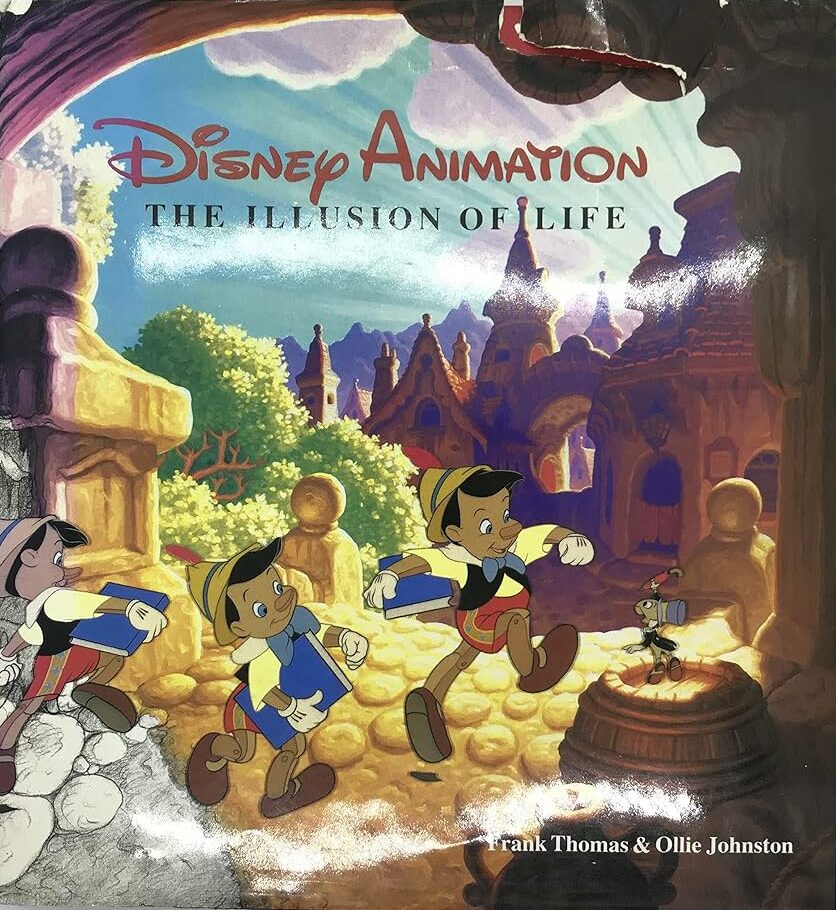
If we think about the work of a musician, for example, we know that his “raw material” is sounds, and that he manage their articulation over time to create melody (horizontally), harmony (vertically), and counterpoint (interweaving the two lines, like the warp and weft in a fabric).
Similarly, the animator deals with movement, to create and modulate temporal transformations of shape and position such as to give objects an illusion of “life”. That is, that “Illusion of Life” canonized by the classic volume of the same title by Frank Thomas and Ollie Johnston (which I have already had the opportunity to mention as the “bible” of our profession).
Movement is certainly present, we could say, in an essential way, even in ALL those we have defined as “synchronic” arts. A movement intrinsic to the forms, to the various components of the work, to their relationship with each other and with the unity of the work as a whole: think of the rhythm of a colonnade in architecture, the tension of the muscles in a sculpture, the play of light and shadows in painting, to the instantaneous shot of a photograph that “freezes” an action, exposing its essence stopping the time.
But this movement it is always a “suggested”, potential, a fragment of an ongoing instant event.
In the arts that we have defined as “diachronic”, however, the movement is expressed directly by the constituent material of the work itself: it is its breath, it is the vehicle of its language that the recipients (spectators, readers, audiences) are called to decode in order to receive the message, the information, the emotion. It is the actual protagonist of the work.
In painting, or in sculpture, etc., the “movement” is that sign, that concrete surface which expresses it visually and conceptually in the immutable instant in which we observe the work.
In music, as in poetry and movie, and even more so in animation (which we can define as drawn cinema), movement is something inherent the medium itself: it is what happens in the “empty” space between one word and another, between one note (a sound) and another, between one frame and another. In this case it is a constantly changing perception, which as observers (spectators) we totally re-construct in our minds.
This is why the impression of “life” is so, pardon the pun, alive, evident, overbearing: because it is precisely our mind that gives it life, right from within our “soul” (or psyche).
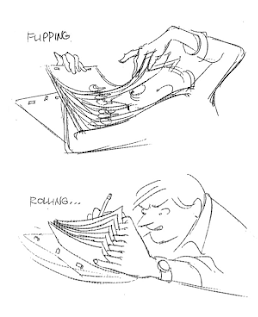
As animators we know well – because we have been taught, or because we have understood it on our own – that what matters in our work is not what we see in the single still drawing that we trace on the paper (or the “pose” that we create on the screen of a system digital 2D or 3D), but what happens between that single still drawing (or frame) and the previous one, and/or the next one: it is a completely invisible “something”, until we start the “time arrow”, starting the projector, or the timeline of the application, or, as was done in the past (and there are very few people left who know how to do it now) by “flipping” the physical paper sheets gathered in a stack.
Every single animated drawing (or every pose on the 3D computer) is in a state of studied imbalance, it is a fragment of interrupted vision, which fatally yearns for subsequent development, it is an “interrupted act”.
That space-time “void” between one drawing and another, between one frame and another, which the observer’s physio-psychological perceptive system completes autonomously, is the real “raw material” of our art – our clay to model, our marble to sculpt, our sounds to tune and modulate: it’s the movement. an event that manifests itself only through the vector “time”.
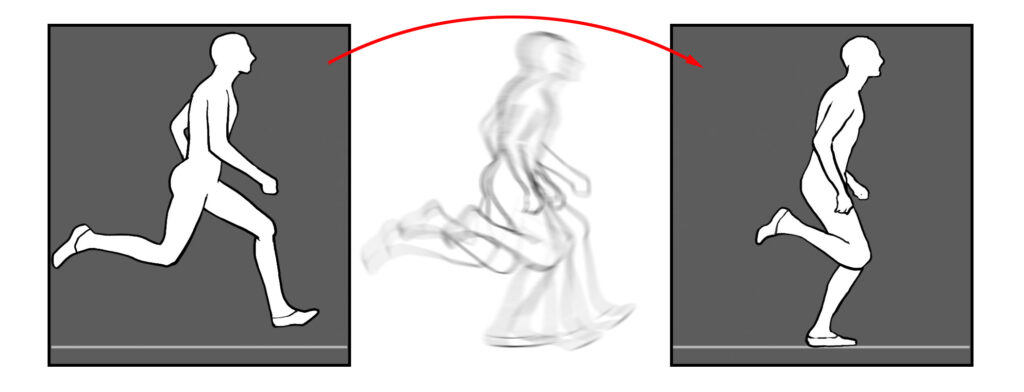
I mean, it’s PURE movement: this is our language, regulated by a precise grammar and a rigorous syntax, which is the object of our work aimed at always refining our expressive tools to finally tell a story.
As we will see later, when we will move from a purely theoretical discussion to a more “practical” one, it is no coincidence that one of the first exercises that every animator encountered and assimilated in his training path, the “bouncing ball”, deals precisely with this basic articulation of the language, where the management of the primary elements of space (spacing) and time (timing), appropriately dosed and modulated, can confer solidity, concreteness, weight and expressiveness to an “object”, even a completely abstract one such as a simple circle drawn on a sheet of paper (or projected on a screen). With an effect that is not by chance completely similar to that of the little discs (or squares) of Michotte’s experiments mentioned in the previous article.
In any case these “expressive elements” are in no way traceable in the single drawing, or frame, seen one by one, but are “nested” in the void of the spatial and temporal comparison between a drawing (or frame) and the previous or subsequent one, regulated by the primordial “physiological” principle of cinematography, i.e. the “persistence of the image on the retina“.
The language of animation starts from these primary elements, just as the word is composed from the alphabet, and speech from the flow and unraveling of words.
As we will see in the next articles, this will lead us to the identification of the two subsequent elements of articulation of our language, to compose what I consider the three fundamental pillars of animation.
From causality to intention. From intention to thought. From thought to narration.
Or, in simple words:
Movement – Acting – Storytelling
